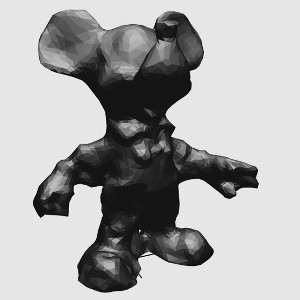With a critical project, in the field of digital manufacturing, Matthew Plummer-Fernandez won an Award of Distinction at the Prix Ars Electronica 2014. In an interview he talks about the software application „Disarming Corruptor“.
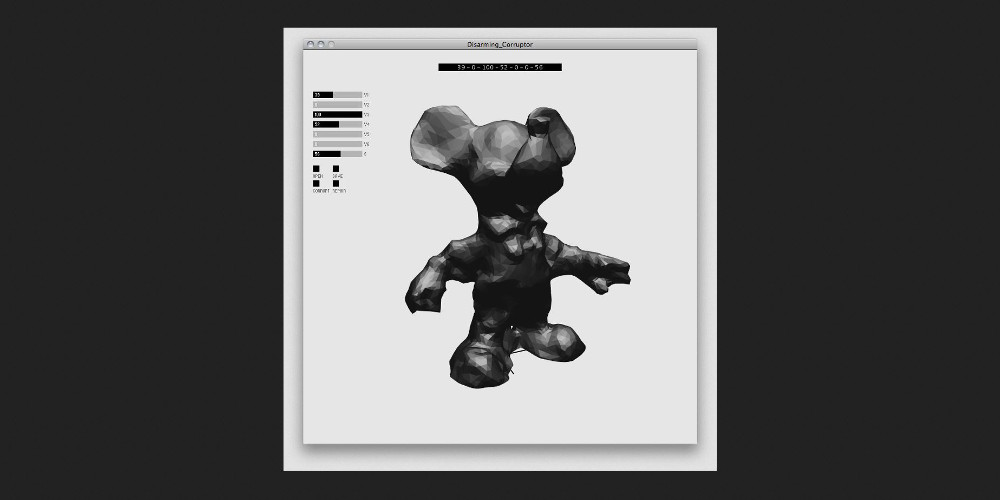 Foto: Matthew Plummer-Fernandez
Foto: Matthew Plummer-Fernandez
In the media, hardly a day goes by without reports of prolific online surveillance, crackdowns on file-sharing and a growing concern for the 3-D printing of illegal items and copyright-protected artifacts. The free software application „Disarming Corruptor“ from Matthew Plummer-Fernandez deals exactly with these issues by encrypting digital 3-D models in STL format in order to evade censorship.
Like an encryption rotor machines Disarming Corruptor runs an algorithm that is used to both corrupt STL files into a visually illegible state by glitching and rotating the 3-D mesh, and to allow a recipient to reverse the effect to restore it back to its original form. The file recipient would need both the Disarming Corruptor application and the unique seven-digit settings used by the sender.
When a so-called patent assertion entity or law enforcement agency comes upon files like this on a sharing platform, all they see are abstract distortions as a preview image. Such files still represent the original object; they just have to be repaired by entering the seven-digit code.
With this critical project, in the field of digital manufacturing, Matthew Plummer-Fernandez won an Award of Distinction at the Prix Ars Electronica 2014. We could talk with him in an interview, among other things, about his opinion on copyright and his vision on the future monitoring of the Internet.
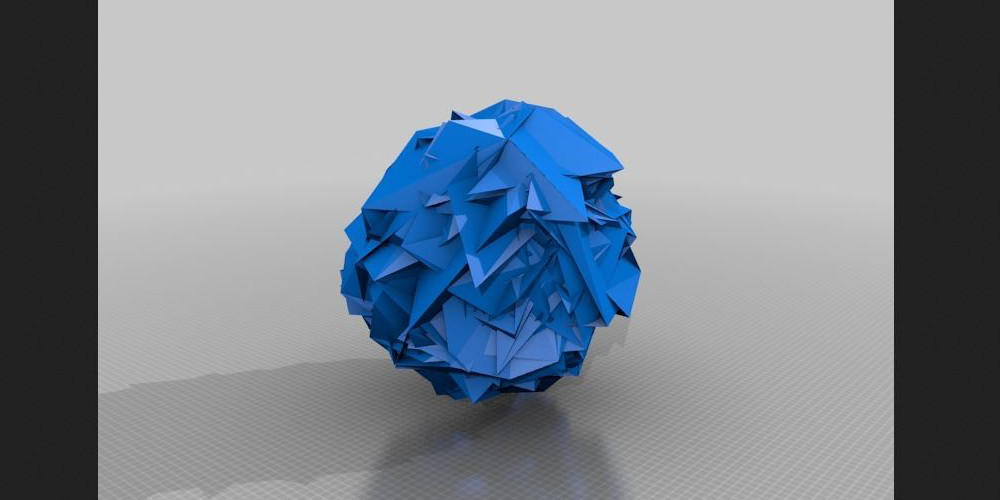 Foto: Matthew Plummer-Fernandez
Foto: Matthew Plummer-Fernandez
What inspired you for Disarming Corruptor?
Matthew Plummer-Fernandez: Disarming corruptor came about when several events were in progress: file-sharing was getting increasingly regulated, 3D printing regularly made the news over concerns of weapons and copyright infringement, and Snowden had just revealed the NSA’s surveillance programs. The project was an amalgamation of those concerns and the response was inspired by cryptography and steganography techniques for getting data safely transmitted from A to B.
Why should people use Disarming Corruptor?
Matthew Plummer-Fernandez: DC was intended for various audiences, for 3D print enthusiasts it served a practical use, to disguise their 3D prints as glitched artefacts, and in an art context the project was confronting societal fears on file-sharing and surveillance. Instead of quarantining the discussion in an art setting, the project played out those fears in real-time with the more immediate threat of people actually doing it.
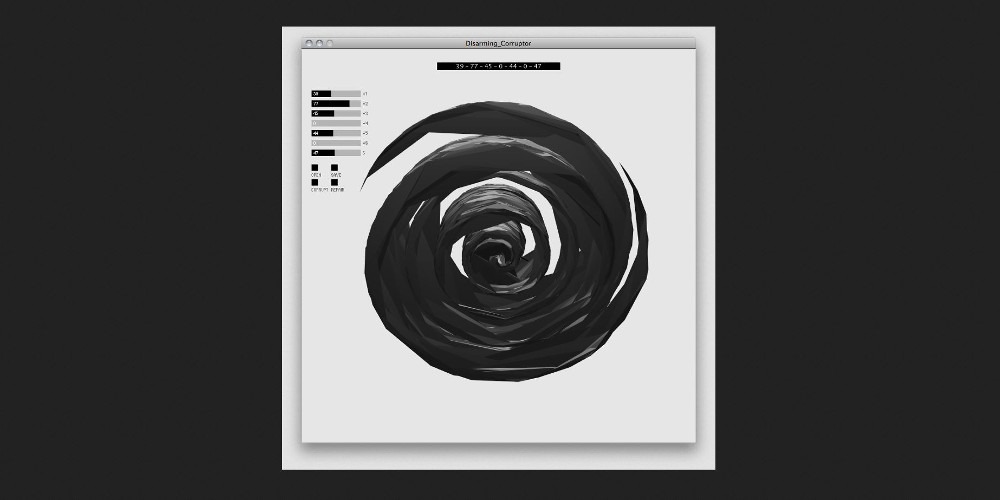 Foto: Matthew Plummer-Fernandez
Foto: Matthew Plummer-Fernandez
Aren’t you afraid that it will be used for a lot of criminal affairs, because illegal items can be shared easier?
Matthew Plummer-Fernandez: I’m not afraid of this no, I think that if you analyse the situation carefully you realise that criminals could use a whole number of methods for distributing illegal files. The use of DC is far too detectable for serious criminals. DC makes file-sharing visible, but it messes with the legal system that is in place that would label some of it as illegal. It would be hard to penalise someone for sharing or downloading abstractly contorted objects that have the unprecedented property of being able to morph into another more contentious object using a passcode and software.
What’s your opinion on copyright?
Matthew Plummer-Fernandez: I think copyright is a very out-dated legal framework for protecting ideas. With present technology all access to media and arts could be considered a breach of copyright, just to view it online we permit a browser to instantiate a copy onto our devices. I think the copyright system has been abused by big corporations to churn out more and more profit from their assets or by acquiring other assets. These assets includes some that clearly belong in the public domain such as the film Metropolis that was public-domain but then returned to corporate IP management under an amendment in copyright law, a revision designed with the interests of this old business model. We need some new and more relevant business models and the laws to facilitate them, the Creative Commons is one example.
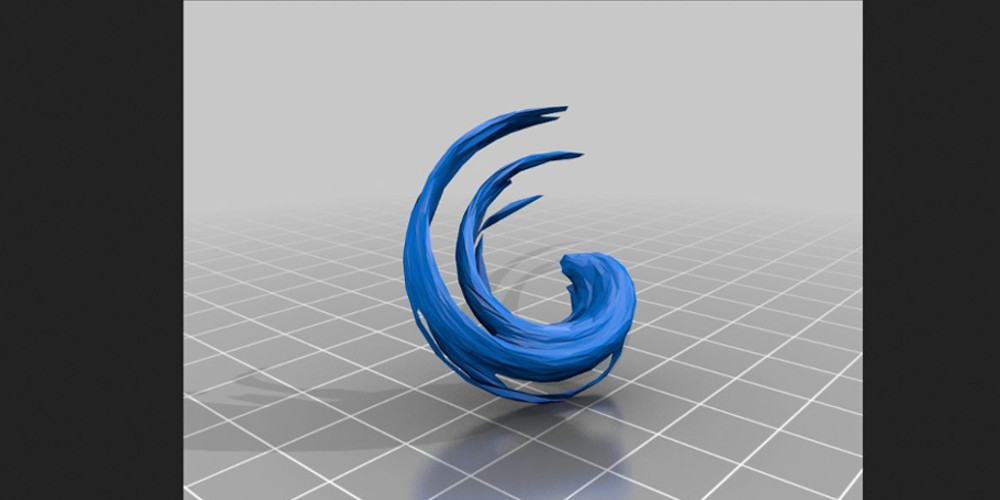 Foto: Matthew Plummer-Fernandez
Foto: Matthew Plummer-Fernandez
I read in an interview you would like to facilitate the emergence of a community of cypher-punk fabbers. How would you describe such a community?
Matthew Plummer-Fernandez: I borrowed that term from a tweet about the project from Bruce Sterling. I think the term makes the case for an unexplored cultural overlap between those that are interested in cryptography (cypherpunks) and digital fabrication (fabbers). I don’t think such a niche community would ever form; it would never reach a critical mass.
To “repair” a file you have to know the key. How do people share the key within the community and simultaneously keep it secret from those who would try to remove the file?
Matthew Plummer-Fernandez: The key-sharing problem is for me the key to unlocking this whole project as having a tongue-in-check side to it. By breaking down the threat of DC you eventually encounter this exact problem ‘ but how do you safely transmit the key?’ which either requires deepening the rabbit hole of secrecy or giving up entirely on worrying about it and shifting focus to the bigger picture.
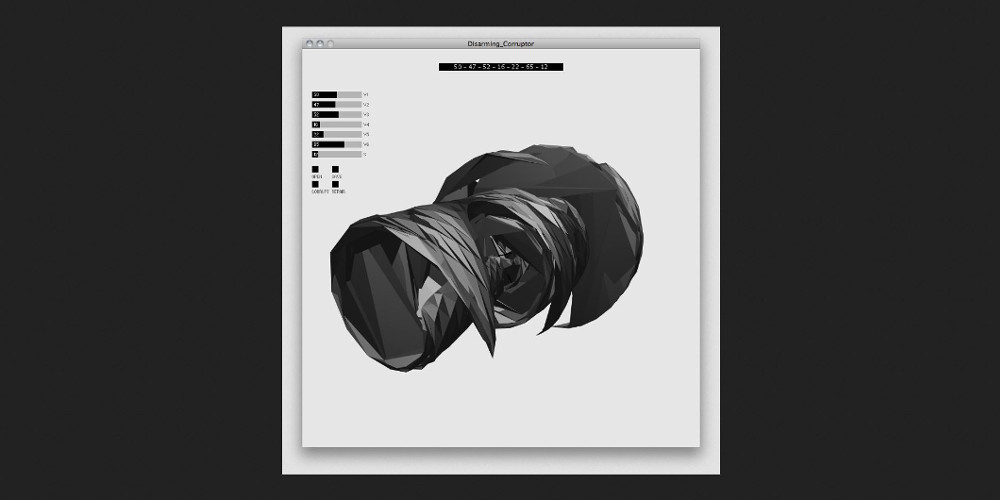 Foto: Matthew Plummer-Fernandez
Foto: Matthew Plummer-Fernandez
How do you think the monitoring on the Internet will develop in the future?
Matthew Plummer-Fernandez: Well the next logical phase of mass surveillance is to monitor the offline world via the Internet, facilitated by an Internet of Things. Also crime prediction and pattern recognition algorithms will play an increasing role in the surveilled state. And speaking of states, there is a problematic difference between living under the laws of a state and the corporate law of a stack (massive entities such as Google, Facebook or Amazon) where it is perfectly legal to be monitored because you signed your consent for it when you first joined their networks. Those will be the watchful eyes to be anxious of in the future (or possibly now).
[vimeo 78422912 w=610&h=320]
The Disarming Corrupter is presented as part of the Cyber Arts Exhibition at Ars Electronica Festival 2014, September 4 to 8. In the Prix-Forums, on Saturday September 6, you also have the opportunity to talk with the artist personally.
